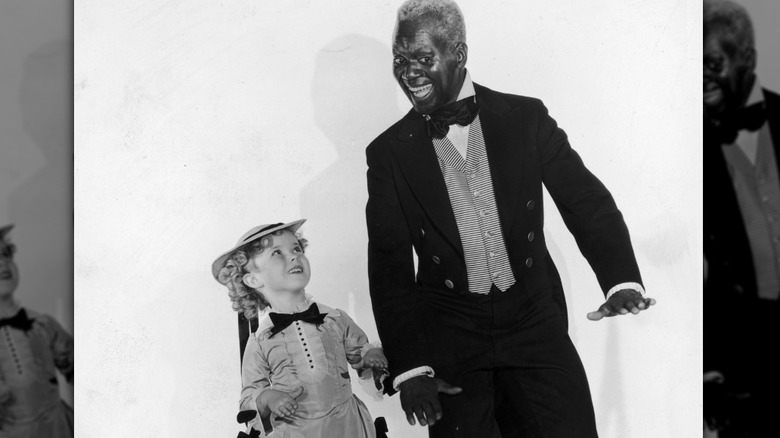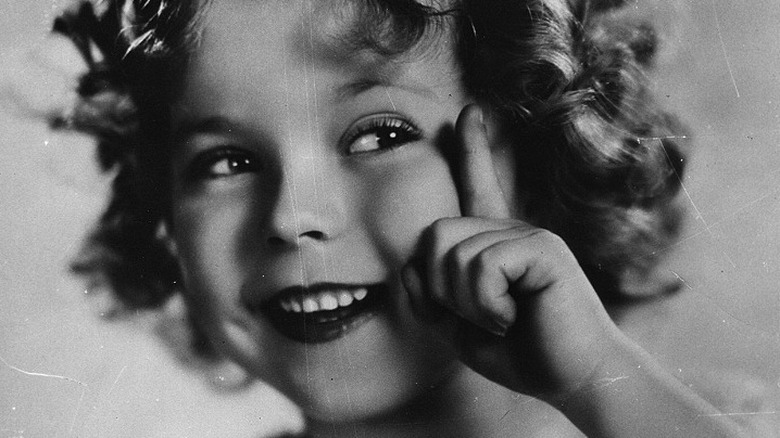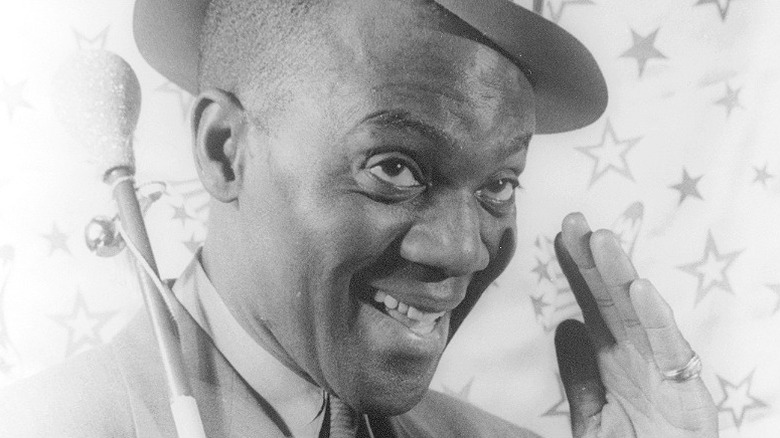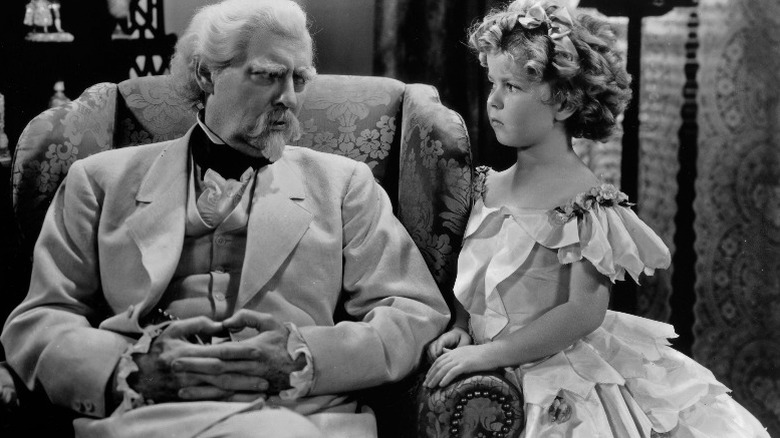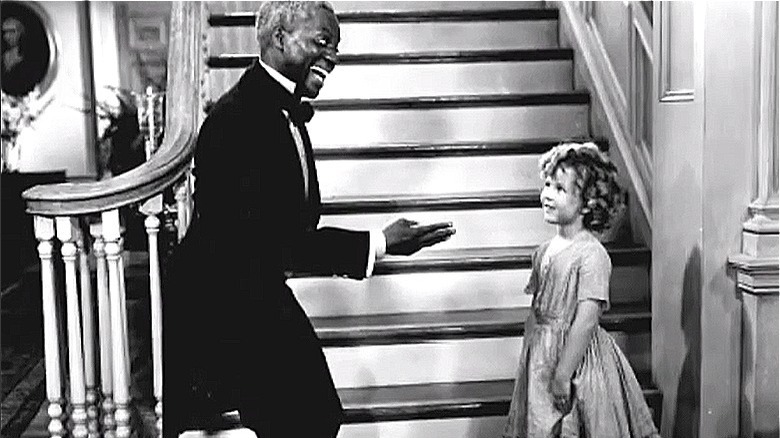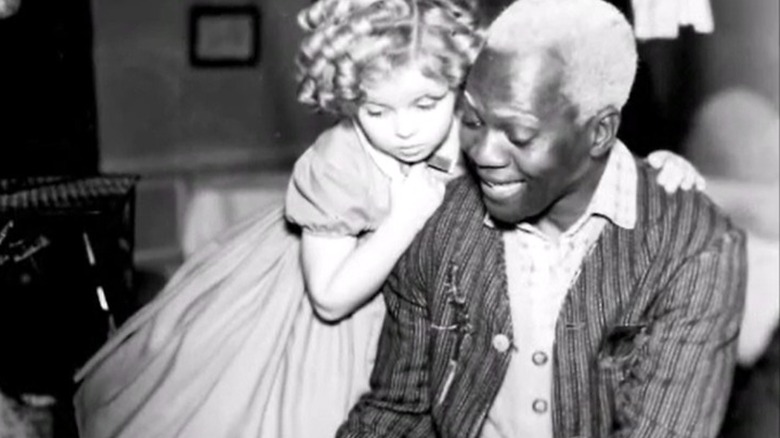The Groundbreaking Friendship Between Shirley Temple And Bill 'Bojangles' Robinson
One of the most iconic actresses of her time was the ever darling Shirley Temple. Per her page at Biography, she was the leading lady of the silver screen during one of the darkest economic periods in world history, The Great Depression. During this time she managed to shine a little light into the lives of those who watched her, while simultaneously making film history by working with one of the best tap dancers in the industry.
According to another post at Biography, Bill "Bojangles" Robinson was a talented actor and dancer who starred on Broadway and in Hollywood during the 1930s and '40s. As an African-American performer at this time during American history, he performed mostly for African-American audiences. This changed for him around 1928 when his dancing talent was first accepted by white patrons. Robinson's career would really take off when he became the dance partner of America's sweetheart in multiple films. This unlikely partnership would become one of the most significant and progressive friendships in Hollywood film history.
The world falls in love with Shirley Temple
Shirley Temple was born on April 23, 1928 in Santa Monica, California. Her dancing career began when she was about 3 years old, as her mother decided she had a natural gift for it. According to Biography, by the time she was 6, she had already managed to land a contract with the Fox Film Corporation. At that young age she starred in her first film, "Carolina," and later went on to make eight more films for the company that helped make her a household name.
With her curly hair, adorable dimples, and dancing talent, she stole the hearts of the American public. At the age of just 7, she went on to star in some of the most well known movies of the decade, such as "The Little Colonel" and "Dimples." While Temple's talent alone would have likely made these films a success, it was her dance partner, Bill "Bojangles" Robinson, who made them unique.
Bill Robinson's long-awaited rise to fame
On May 25, 1878, Luther Robinson was born in Richmond, Virginia. After the death of both of his parents by the time he was 7, he was raised by his grandmother, who had previously been enslaved (per Biography). Robinson changed his name to Bill, after allegedly convincing his brother to switch names with him.
Robinson became a dancer at the age of 5 when he began performing at local beer gardens for patrons. He also began traveling and performing at the age of 9 with Mayme Remington's touring troupe, before eventually transitioning to performing as a vaudeville act. During this time he gained popularity within the African-American community for his musical comedy performances.
In 1928, he made his Broadway debut in "Blackbirds," a show featuring African-American performers created to appeal to white patrons. Robinson became well known for his "stair dance" routine and earned the nickname Bojangles, due to his easygoing and cheerful personality during his performances. In 1935, he really made his mark on Hollywood when he landed a role starring opposite America's favorite curly haired cutie, Miss Shirley Temple.
A film pairing breaks barriers
Per IMDb, the 1935 film "The Little Colonel" starred Shirley Temple as Lloyd Sherman, a little girl who attempted to broker peace between her plantation-owning grandfather and her parents in the days after the Civil War. Alongside her was Bill Robinson, who portrayed a character named Walker, the servant of Lloyd's father in the film. This type of portrayal of African-Americans as servants or slaves during this time period was not uncommon, especially in films set in the post-Civil War era. What was uncommon, however, was a scene that was shot between Temple and Robinson that would change American film history.
The most well-known scene in "The Little Colonel" is the staircase tap dance performed between 6-year-old Temple and 57-year-old Robinson. According to the Huffington Post, this dance made cinematic history as they were the first interracial duo to tap dance as a couple on screen. Despite the 50-year age gap, these two had undeniable chemistry that was evident in their iconic performance.
An unlikely pairing
You might be wondering how on earth two actors from such different backgrounds, of different ages and of different races, ended up in the same film making movie history. Having a bona-fide starlet like Shirley Temple in any film during this time was almost a guaranteed money maker, but choosing an African-American actor to participate alongside her was another matter entirely.
The decision to add an African-American actor to the cast of "The Little Colonel" was the brainchild of the head of Fox, Winfield Sheehan (per A Trip Down Memory Lane). He knew Robinson was a talented dancer, but was unsure of him as an actor. In order to cover all of his bases, Sheehan devised a contract for Robinson that would be voided if he did not do well in the dramatic test. Fortunately for him, Robinson did well enough to secure the part for himself, as well as an additional role as Temple's dance teacher.
A life-long bond
While the sweet relationship between Temple and Robinson on the big screen did charm some audiences, there were many who were not as easily swayed. During this time, there were still many prejudices that existed in American society, which resulted in very different treatment of both actors. According to NPR, once while filming a movie, Temple was staying in her own private cottage, while Robinson was relegated to sleeping in a room above a drug store. Temple admitted that she didn't realize the racism that her co-worker suffered until she was older. However, despite their differences, nothing changed about how she saw the man she referred to as her beloved "Uncle Billy."
The two spent a lot of time together as they went on to film three additional movies together, with Robinson also working with Temple as her choreographer on the 1936 film "Dimples." Even after the two shot their last movie together, Temple still saw Robinson as a true friend. Temple stated, "Bill Robinson treated me as an equal, which was very important to me ... He didn't talk down to me, like to a little girl. And I liked people like that. And Bill Robinson was the best of all" (per NPR). Their iconic staircase dance and super-sweet bond helped open the door for actors and actresses of any race to be able to share the big screen together.
